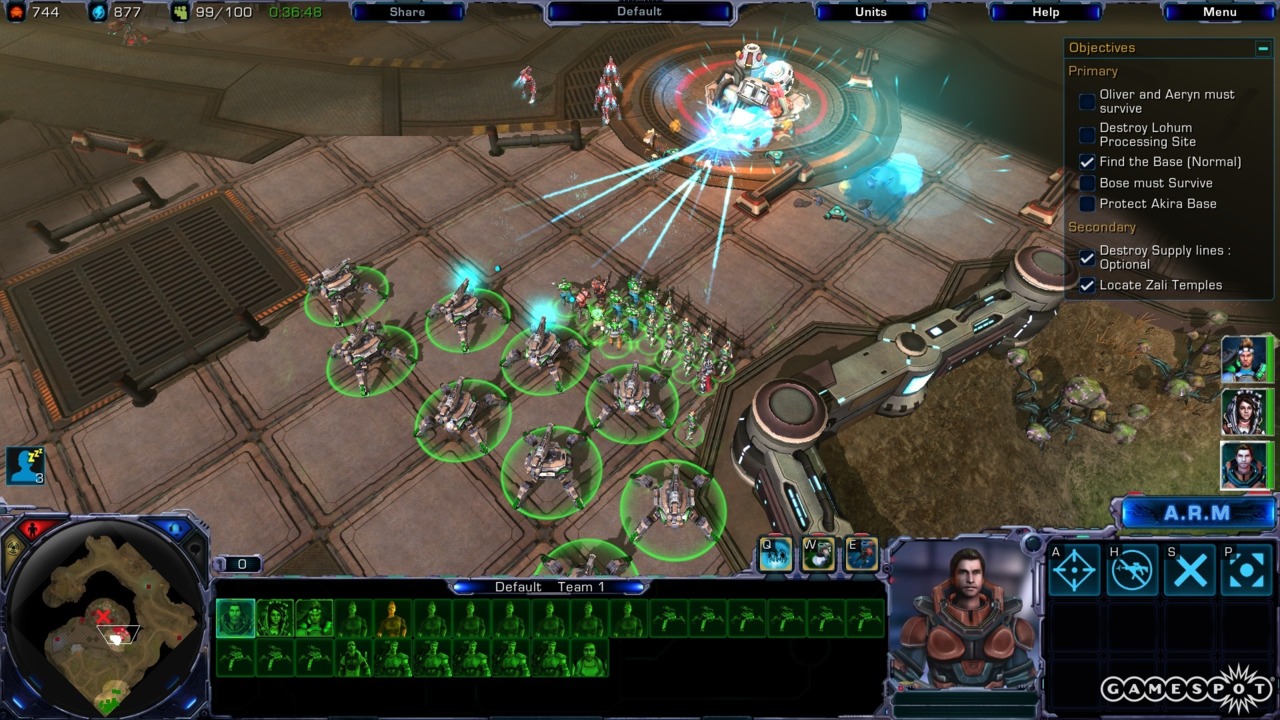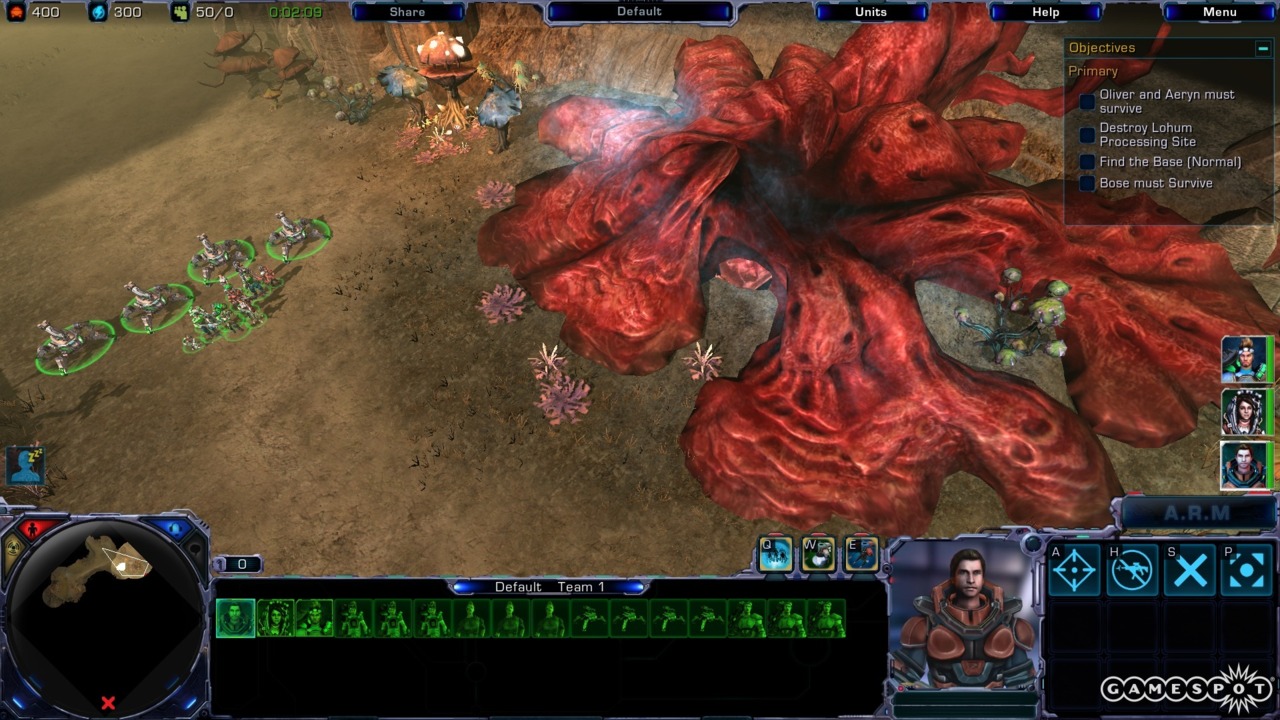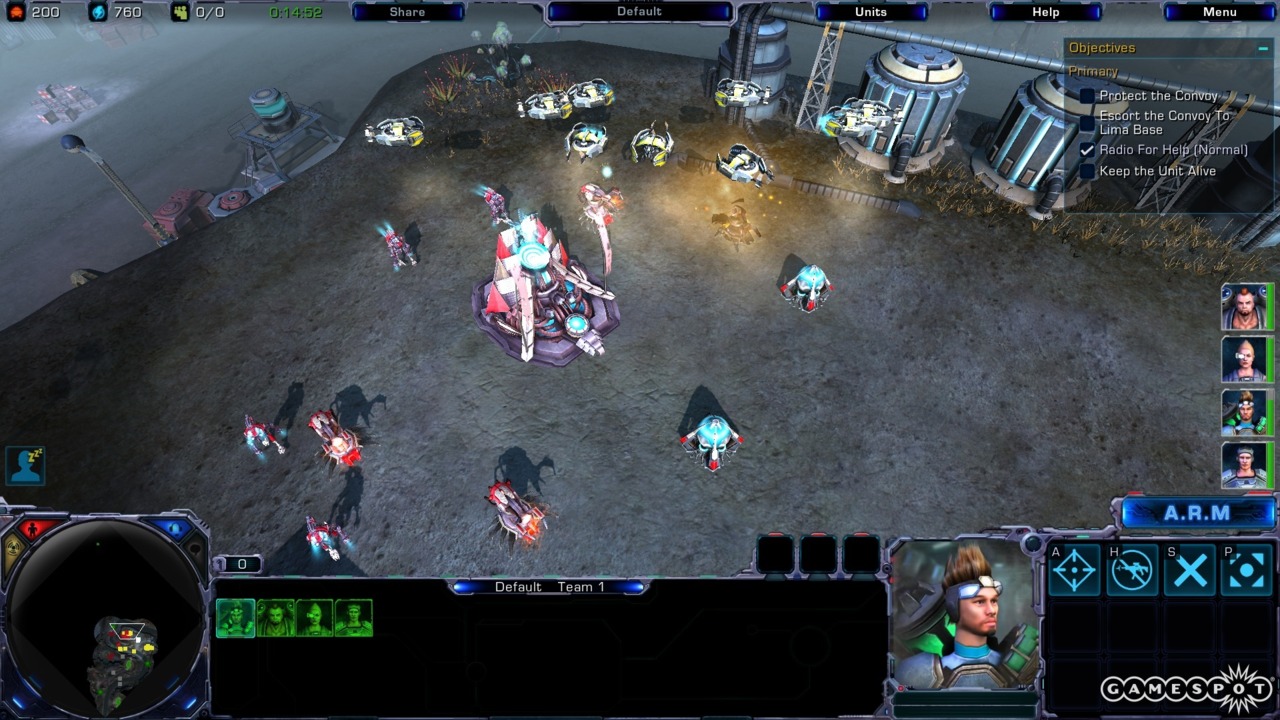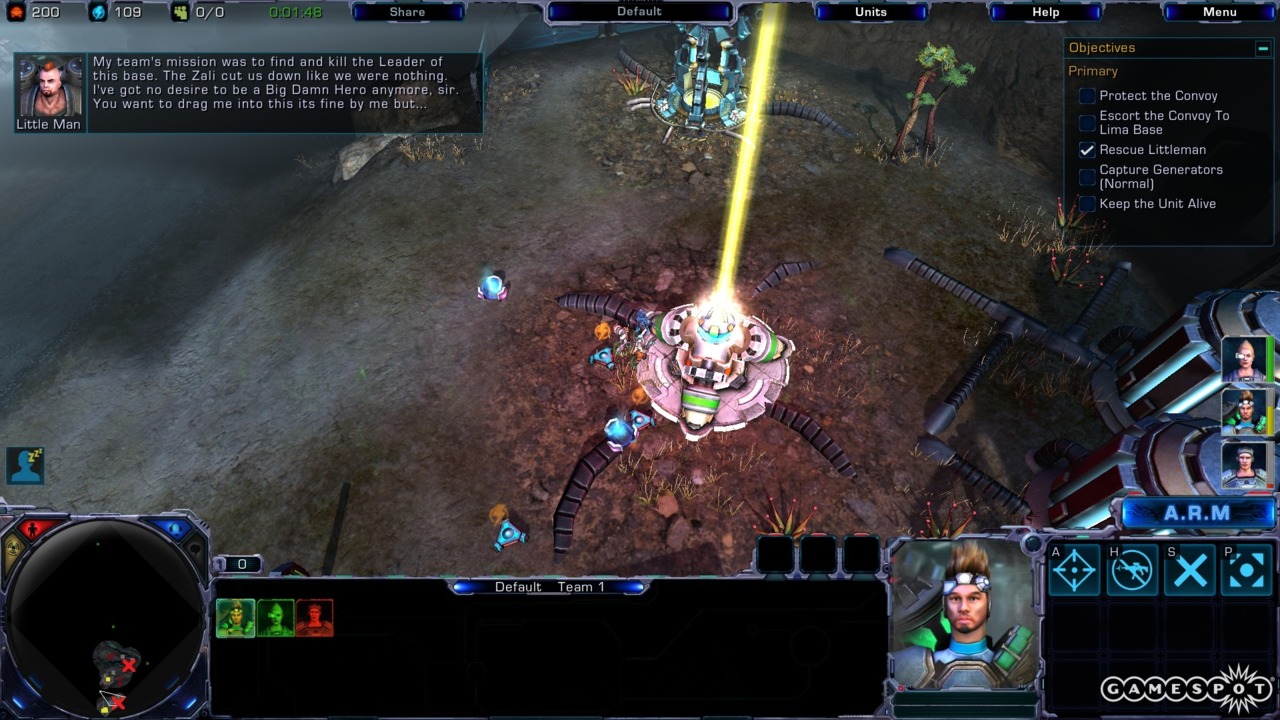What stands out most about Tryst is its odd name. Otherwise, this real-time strategy game about a sci-war between humans and aliens is a generic clickfest based on the traditional Starcraft formula, and comes with a ton of problems. Speedy missions and a straightforward base-building-and-battling recipe pique your interest for a little while, but a fleeting campaign, inconsistent difficulty, a range of irritating bugs, and the absence of anything interesting in multiplayer gives the game a very short shelf life.

If you have ever played an RTS before, you won't have any problems figuring out what Tryst is all about. The campaign story is the same old claptrap about evil aliens waging war with humans, this time about 1,000 years from now on a colony world called Ishtonia. The aliens are sci-fi stereotypes, consisting solely of biomechanical monsters called the Zali, who turn on humanity at the start of play. They launch a surprise attack after years of peaceful coexistence and assassinate the current president, who represents the Rhyn Tech Corporation in some kind of corporate oligarchy. This leaves protagonist Ivan Petrovich in charge of the inevitable counterattack and making peace with a bunch of rebels consisting of an underclass apparently imported from Earth's prisons. The plot doesn't amount to a whole lot. Tensions between the two human factions are washed away with a quickie alliance in the second campaign mission, and the Zali are the traditional vile extraterrestrials who just want to kill all humans.
Gameplay covers the same old ground. You build bases, gather resources, crank out troops, and assault the enemy. There are two resources--ore and electricity--both of which are handled automatically with stations that accumulate these goodies. Some buildings can be upgraded. And a tech tree of advancements in the ARM, or Augmentation Research Mechanism system, lets you trick out troops and other units with various weapon and equipment buffs like shields, health regeneration, and so forth. The only aspect of the mission design that stands apart from RTS rivals is the speed. Missions fly by due to zippy building times, fast-walking units, and enemies that waste no time hammering your positions. It's like everyone involved has someplace better to be, so they sprint through objectives.
Missions play out in a straightforward fashion where you go through a building phase and head out to explore the map and take over enemy positions and resource points. The only variance is that sometimes you start at a base and sometimes you have to explore the map and go through a fair number of battles before you get to any building. Some diversions, such as being forced to choose between objectives and being pressed on multiple fronts simultaneously, keep scenarios from running on rails too much, at least, and add serious challenge, especially to the closing moments of an assignment.

Difficulty is a problem in spots, though. The campaign ranges from incredibly easy to insanely hard with no warnings about what you're going to run into around the next corner, and the closing missions see you reloading saves dozens of times. Some of the insta-fail conditions are overly demanding, too, as in the grueling fourth mission where you need to keep all four members of your tiny assault team alive against ridiculous odds. Only the simpleminded enemy AI lets you get through some of the tougher moments, as you can regularly draw one or two enemies away from larger packs of foes, kill them, and then go back for more.
Tryst's single-player campaign does not last long, though. Just like the gameplay itself, the campaign flies by. This leaves you with solo skirmish play and multiplayer to keep the game fresh. Neither are great options, however. Skirmish play is limited by a paltry number of maps, and because few people are currently playing the game online, multiplayer isn't much of a draw. Both offer the same speedy play of the campaign. Everything moves very quickly, especially in a skirmish against the computer, where enemy attacks on your base arrive early and often.
Bugs are also prevalent, though not significant enough to ruin the game. Error messages occasionally pop up, with messages of missing special effects and errors that are logged and sent on to the developers. Pathfinding is a pain, especially with larger units, because they often run into one another on the game's mostly narrow roadways and wind up taking circuitous routes that can put them in harm's way. Even smaller units sometimes stop well before getting to their destinations near groups of allies, even when those destinations are clear and in the open.

Additionally, saving is erratic because the game doesn't always sync properly: you might save with troops fully healthy and ready to rock, but then reload the game and find that you're back a minute earlier and in another part of the map. The game might even load in the middle of an enemy assault that was not present when the game was saved. Load times are extremely long, which is maddening in the later campaign missions, where you get wiped out a fair bit. Crashes are another problem: the game locks up often when loading a save or trying to exit. Thankfully, crashes don't occur when missions are under way, so game progress isn't usually affected.
From a production standpoint, Tryst provides just what it has to, and no more. There are no animated cutscenes beyond the opening of the game, for instance, and even buildings don't so much explode as they suddenly turn into blackened rubble. The graphics engine keeps up with the action with minimal slowdown even during intense firefights, although detail is limited, especially when the camera is in its default position. You have to zoom in pretty close to tell one unit type from another, which isn't advisable given the speed of battles.

Alien backgrounds set an atmospheric scene at least, with standard turf and dirt tracks combining with unworldly fauna and glowing swamps. Music and voice acting underscore the game's limited budget. While there are a full cast of voice actors and plenty of scripted plot points, the voice actors themselves are a United Nations of odd accents. And the order acknowledgments are so limited that you will be climbing the walls before the end of your first mission, after hearing comments about covering the six and hoping that the objective will soon be something shiny. Grunts would have been preferable.
Even with its negatives, Tryst can provide some entertainment for a few hours. There isn't anything here that stretches your RTS skills, so you can sit down and start playing on the fly without bothering to learn anything new. Such easy accessibility means that you see just about everything that the game has to offer in too little time, though, which is enough time for the game to completely wear out its welcome due to its many bugs and design flaws.